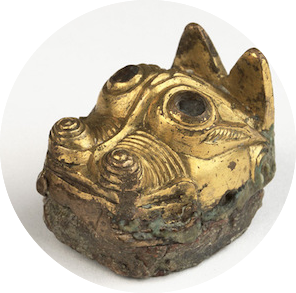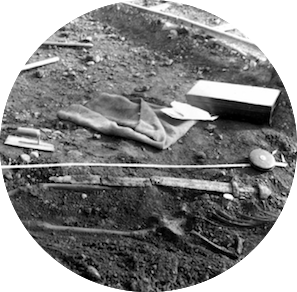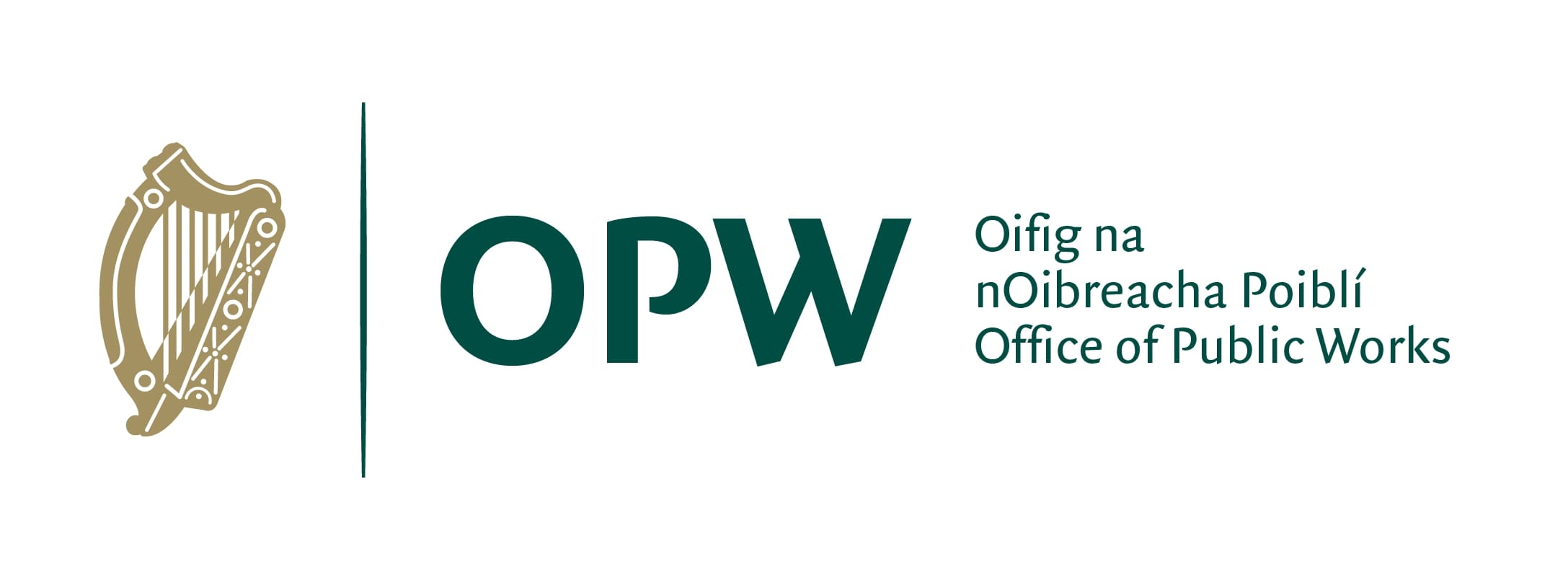Archaeology
There have been a number of significant excavations and finds in the land that the Irish National War Memorial Gardens occupies today. These began in 1836 in nearby Kilmainham. Ten years later, the Danish archaeologist Jens Worsaae commissioned James Plunket to produce watercolours of the finds; these can still be seen in the National Museum today. The construction of the Great Southern and Western Railway, and its need for gravel from the pits of Long Meadows, brought more items and burials to light in the 1840s and 1860s. In the 1860s Sir William Wilde (father of Oscar) produced a seminal paper on these discoveries in the area, at that time a sloping meadow. Further items were discovered during the 1930s, when heavy labour was being carried out on site in order to construct the memorial. Ad hoc maintenance work in recent decades has also brought finds or burials to light.
The overwhelming consensus reached by archaeologists in the past twenty years of study is that Islandbridge was an extremely important Viking site, probably as important as their traditionally-acknowledged centre of activity further east along the Liffey towards Dublin city centre. One school of thought places Islandbridge as the location of the original Viking base in the 840s, a place where ships could stay while they explored the lands around, while the actual settlement was founded in the early 900s upstream where the Poddle and the Liffey collided in the Dubh Linn (dark pool). This places the centre of Viking activity at Islandbridge/Kilmainham for sixty years, until driven from Ireland in battle by the kings of Leinster and Brega in 902. Twelve years later they returned to settle at Dubh Linn. A century later, in 1013, the same fording point on the Liffey would be where Brian Boru camped, prior to the Battle of Clontarf in April of the following year.

Excavations in 1866
Due to railway works in the area, the nineteenth century saw a number of important archaeological finds in the area adjacent to that which would become the Irish National War Memorial Gardens. These were presented by Sir William Wilde to the Royal Irish Academy in an 1866 study. Find out what was found, and how the finds changed the narrative of Viking history in Dublin.

Discoveries During and After the 1930s
Bibliography
-
Glandorf, Dirk. ‘The Weapons from the Kilmainham-Islandbridge Cemeteries in a Norwegian Perspective’ in TijdSchrift voor Skandinavistiek, vol. 22 (2001), pp. 284-308.
-
Larsen, Anne-Christine (ed.). The Vikings in Ireland (Roskilde, 2001).
-
O’Toole, Fintan. A History of Ireland in 100 Objects (Royal Irish Academy, 2013).
-
Sikora, Maeve/ Ó Donnabháin, Barra / Daly, Niamh, ‘Preliminary report on a Viking warrior grave at War Memorial Park, Islandbridge’ in Medieval Dublin XI (Four Courts Press, 2011).
-
Wilde, W.R. ‘On Scandinavian Antiquities Discovered near Islandbridge, County Dublin’ in Proceedings of the Royal Irish Academy (1836-1869), vol. 10, pp. 13-22.
